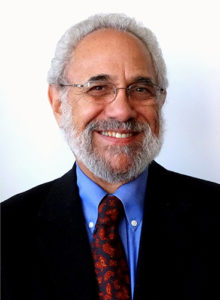By the early 1970s, just a few years after aggressive deinstitutionalization began, it became clear that merely keeping people with serious and persistent mental illness out of the hospital and in the community was not enough. It was not even enough to make sure that they got good psychiatric treatment (not that it happened often). To have a decent life, people who had been discharged after years in state hospitals or who had been “diverted” from admission to state hospitals needed more. They needed a place to live that was safe and tolerably comfortable. They needed to have enough money to get through a month without having to panhandle at the end. They needed to have people in their lives who cared about them and who they cared about. They needed to have something interesting and pleasurable to do beyond hanging out on the streets of their neighborhoods. They needed opportunities for education and work. They needed to have access to good medical care.

But that’s not what they had. I worked on the Upper West Side of Manhattan for the first 6 years of the 70’s. The people I worked with lived in shabby, often dangerous single room occupancy hotels. They got very poor psychiatric treatment that relied on excessively high doses of drugs like Thorazine. The support they got from welfare was barely adequate for those who were incredibly frugal; for those who wanted an occasional nice meal or a drink with friends, life was not affordable. They often scrounged for cigarette butts on the sidewalks and panhandled for a few extra bucks so they could eat at the end of the month. Family life was often difficult, friends hard to find. They were mostly not welcome in mainstream settings. The shabbiness of their dress and other trappings of severe poverty as well as idiosyncratic behavior set them apart. Even houses of worship were not welcoming.
To make it right, in 1977 the federal government developed the Community Support Program (CSP) with an emphasis on housing, income support, rehabilitation, and case management. The states followed.
But even CSP was not enough, in part because it couldn’t happen fast enough and in part because in practice the focus of community support was limited to helping people stay in the community safely and to filling their daytimes. Something more was needed.
Two primary ideas emerged – “quality of life” and “recovery.” And, speaking metaphorically, a quiet battle ensued between these concepts. In the end “recovery” won. It is interesting to think about why.
The concept of “quality of life” actually emerged first as the ultimate goal of the community support program. Somewhat later, Anthony Lehman, a brilliant psychiatrist, developed a way to measure “quality of life” that had several critical domains—life satisfaction, living situation, daily activities, family, social relations, finances, work and school, legal issues, and health. Quite comprehensive and an extremely useful guide both for (1) clinicians who understood their responsibility to be not only to limit symptoms of illness but also to promote a decent quality of life and for (2) policy makers trying to design and finance systems of care that enabled people with serious mental illnesses to live as well as possible.
“Quality of life” had great appeal to many mental health professionals, including me. I thought then, and still think, that it was great progress to move from focus merely on clinical condition to an effort to build systems of care that addressed the most fundamental needs in people’s lives.
But at the same time, people with mental illnesses began to speak for themselves. I personally learned most from Ed Knight through private conversations about his experiences in hospitals where he was informed that he had no hope of becoming the PhD in sociology that he became and where he found more help from fellow inmates than from the mental health professionals until one of them supported his vision for himself. Ed did not deny that he had a mental illness, and he used medication. But he insisted that he “used” it, and not that he took it. It was his choice and a tool to achieve his goals. He was actively helping himself not being passively compliant. Ed was particularly clear that the diagnostic system of the time essentially defined “schizophrenia” (his diagnosis) as a hopeless condition and that people who recovered from schizophrenia often were then re-diagnosed with one or another condition from which it was believed to be possible to recover.
I was also personally influenced by Patricia Deegan whose wonderful lecture and essay, “A Conspiracy of Hope,” defined a new perspective on life with severe mental illness.
Ed and Pat, or should I say Drs. Knight and Deegan were among the leaders of a movement of people with histories of mental illness that insisted that they be addressed as “people with” not as an amorphous mass “the chronically mentally ill.” They insisted that they did not need professionals to speak for them, that they could speak for themselves. They made clear that people with persistent mental illnesses had human aspirations—for relationships, for activities they found satisfying and meaningful, for acceptance in mainstream society, and for recognition in the mental health community. And perhaps most importantly they insisted on hope.
The advocates for “quality of life” did not seem to get this. Here is Anthony Lehman’s opening sentence to his classic article on evaluating quality of life, “Evaluating the well-being of the chronically mentally ill has become crucial to revising our national plans for serving them in the wake of three decades of deinstitutionalization.” (Emphasis added) “The chronically mentally ill”—there it is, the amorphous mass of the hopeless.
In contrast, here is William Anthony from his early and definitive article on recovery, “Recovery is … a deeply personal, unique process of changing one’s attitudes, values, feelings, goals, skills, and/or roles. It is a way of living a satisfying, hopeful, and contributing life even with limitations caused by illness. Recovery involves the development of new meaning and purpose in one’s life as one grows beyond the catastrophic effects of mental illness.” (Emphasis added).
Anthony makes it clear in this article that the advocates of the community support program and of “quality of life” have it right. Treatment alone cannot make a life. But he adds that addressing concrete needs for housing, income, relationships, and activity also are not enough to make a life. Something else is needed. Something “deeply personal,” a re-making of personal goals, the discovery of meaning.
Some mental health professionals, I among them, have had reservations about using the word “recovery” to name a process that can include living with continuing mental illness. Isn’t that a misleading term for those people for whom severe mental illness persists?
Perhaps, but doesn’t talking about improving the quality of life for “the chronically mentally ill” have a ring of hopelessness about it?
At the dawn of the 21st century “recovery” won the day. A presidential commission created by George W. Bush and chaired by Michael Hogan, with powerful input from Roslyn Carter, the former first lady, focused on the potential for people with mental illnesses to lead lives that they found satisfying and meaningful. In part this meant focusing on those who would recover in the ordinary sense, people who no longer have symptoms of mental illness. In part this meant focusing on those people who rose to leadership positions in the mental health community despite continuing struggles with severe mental illness, people like Pat Deegan and Ed Knight among many others. And in part this meant recognizing the possibility of good lives for people still disabled by mental illness.
The Commission voted for a “recovery-oriented” system; it voted for hope as well as for a comprehensive system of care and treatment.
During the first two decades of the 21st century, sad to say, housing development has fallen short, income support has been barely adequate, finding high quality treatment has remained difficult, acceptance by mainstream society has remained limited, and people with severe mental illness continue to die younger than the general population.
But the lives of people with histories of mental illness have improved, not enough for sure but improved. And they have become powerful spokespeople for themselves. They are now called “peers” and have become helpers as well as the helped. Patricia Deegan’s conspiracy of hope has spread to those who organize and manage the nation’s mental health system. It is not total victory for people with histories of severe mental illness, but it is a triumph for “recovery.”
Michael B. Friedman, LMSW is a retired social worker who continues to teach at Columbia School of Social work – via Zoom – and who has become the volunteer chair of The Cognitive and Behavioral Health Advocacy Team of AARP Maryland.







